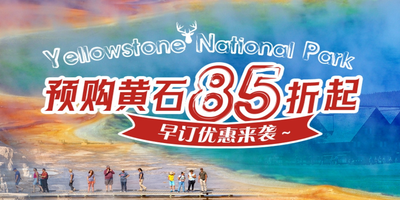共计 9517 个字符,预计需要花费 24 分钟才能阅读完成。
The culture of the United States of America is primarily of Western culture (European) origin and form, but is influenced by a multicultural ethos that includes African, Native American, Asian, Polynesian, and Latin American people and their cultures. It also has its own social and cultural characteristics, such as dialect, music, arts, social habits, cuisine, and folklore. The United States of America is an ethnically and racially diverse country as a result of large-scale migration from many countries throughout its history.
Many American cultural elements, especially from popular culture, have spread across the globe through modern mass media.
The European roots of the United States are in the English settlers of colonial America during British rule. The varieties of English people as opposed to the other peoples in the British Isles were the overwhelming majority ethnic group in the 17th century (population of the colonies in 1700 250,000) and were 47.9% of percent of the total population of 3. 9 million. They constituted 60% of the whites at the first census in 1790 (%, 3.5 Welsh, 8.5 Scotch Irish, 4.3 Scots, 4.7 Southern Irish, 7.2 German, 2.7 Dutch, 1.7 French and .2 Swedish), The American Revolution, Colin Bonwick, 1991, p. 254. The English ethnic group contributed the major cultural and social mindset and attitudes that evolved into the American character. Of the total population in each colony they numbered from 30% in Pennsylvania to 85% in Massachusetts, Becoming America, Jon Butler, 2000, pp. 9—11. Large non-English immigrant populations from the 1720s to 1775, such as the Germans (100,000 or more), Scotch Irish (250,000), added enriched and modified the English cultural substrate, The Encyclopedia of Colonial and Revolutionary America, Ed. John Mack Faragher, 1990, pp. 200—202. The religious outlook was some versions of Protestantism (1.6% of the population were English, German and Irish Catholics ).
The British colonies inherited the English language, legal system, and British culture, which was the majority cultural heritage. Parts of what are now the United States were colonized by France, Spain, the Netherlands, Sweden, Denmark, Russia, and Japan (Northern Mariana Islands and briefly Guam). Though eventually overtaken by British or American territorial expansion, the longer they lasted the more these earlier colonial societies contributed to modern-day culture, including place names, architecture, religion, language, and food.
Jeffersonian democracy was a foundational American cultural innovation, which is still a core part of the country’s identity.Thomas Jefferson’s Notes on the State of Virginia was perhaps the first influential domestic cultural critique by an American and was written in reaction to the views of some influential Europeans that America’s native flora, fauna, including humans, were degenerate.
Major cultural influences have been brought by historical immigration, especially from Germany in much of the country,Ireland and Italy in the Northeast, Japan in Hawaii. Latin American culture is especially pronounced in former Spanish areas but has also been introduced by immigration, as has Asian American cultures (especially on the West Coast). Forced migration during the Atlantic slave trade, followed by liberation won in the American Civil War created African-American culture which pervades the South and other areas receiving internal immigrants during the Great Migrations. Blending Southern and traditional African culture to some degree, this uniquely American culture has its own dialect; has contributed significant innovation in music, dance, and fashion; embraced a struggle by many African-Americans for political and economic equality; and is associated with significant populations of African-American Muslims and Christians in “Black churches”. Rap and music videos featuring African-American urban street culture have appeared in countries and melded with local performance cultures worldwide.
Though many mainland Native American tribes and nations were overpowered by European colonists and American territorial expansion, but even in the areas they were pushed out of left cultural influences such as place names, knowledge about New World crops; cultural appropriation and the history military rivalry resulted in Native American-themed sports mascots. Native culture remains strong in areas with large undisturbed or relocated populations, including traditional government and communal organization of property now legally managed by Indian reservations (large reservations are mostly in the West, especially Arizona and South Dakota). The fate of native culture after contact with Europeans is quite varied. For example, Taíno culture in U.S. Caribbean territories is nearly extinct and like most Native American languages, the Taíno language is no longer spoken. In contrast the Hawaiian language and culture of the Native Hawaiians has survived in Hawaii and mixed with that of immigrants from the mainland U.S. (starting before the 1898 annexation) and to some degree Japanese immigrants. It occasionally influences mainstream American culture with notable exports like surfing and Hawaiian shirts. Most languages native to what is now U.S. territory have gone extinct, and the economic and mainstream cultural dominance of English threatens the surviving ones in most places. The most common native languages include Samoan, Hawaiian, Navajo language, Cherokee, Sioux, and a spectrum of Inuit languages. (See Indigenous languages of the Americas for a fuller listing, plus Chamorro, and Carolinian in the Pacific territories.)Ethnic Samoans are a majority in American Samoa; Chamorro are still the largest ethnic group in Guam (though a minority), and along with Refaluwasch are smaller minorities in the Northern Mariana Islands.
American culture includes both conservative and liberal elements, scientific and religious competitiveness, political structures, risk taking and free expression, materialist and moral elements. Despite certain consistent ideological principles (e.g. individualism, egalitarianism, and faith in freedom and democracy), American culture has a variety of expressions due to its geographical scale and demographic diversity. The flexibility of U.S. culture and its highly symbolic nature lead some researchers to categorize American culture as a mythic identity;others see it as American exceptionalism.[citation needed]
The United States has traditionally been thought of as a melting pot, with immigrants contributing to but eventually assimilating with mainstream American culture. However, beginning in the 1960s and continuing on in the present day, the country trends towards cultural diversity, pluralism, and the image of a salad bowl instead.Throughout the country’s history, certain subcultures (whether based on ethnicity or other commonality, such as the gay village) have dominated certain neighborhoods, only partially melded with the broader culture. Due to the extent of American culture, there are many integrated but unique social subcultures within the United States, some not tied to any particular geography. The cultural affiliations an individual in the United States may have commonly depend on social class, political orientation and a multitude of demographic characteristics such as religious background, occupation, and ethnic group membership.
Mass media promote cross-cultural diffusion. Some subcultures have national media exposure with dedicated television channels and crossover with mainstream media (such as Latin, African American, and LGBT culture, though there are many niche channels). Some communities have local broadcast or paper publications that carry content from a specific culture, such as native radio stations or Chinese-language newspapers in Chinatowns. Almost every subculture has a presence on the World Wide Web and social media.
Military history has influenced American culture and its worldwide reach in several ways. German cuisine became stigmatized by World War I; but in contrast the end of World War II resulted in cross-fertilization of American and Japanese business techniques during reconstruction and occupation, and brought home troops with an increased taste for Italian dishes. Wars have also forced progress on equal rights for women and racial minorities, as these groups proved their till-then unrealized potential either in industry while men were off fighting, or by serving in the military honorably and effectively. The American Civil War highlighted differences in culture (including attitudes toward racism) between the Southern United States and the North. Though the issue of slavery was settled by the war, racism and discrimination persisted and were supported by laws in some Southern states. Combined with determined civil rights activism, later wars resulted in profound changes in social norms, including desegregation, more intermixing of Black and White cultures, and more egalitarian social roles for men and women compared to countries that have not undergone similar shifts. Modern display of the Confederate flag and removal of Confederate monuments and memorials remain controversial cultural and political issues, though many elements of proud Southern identity and culture such as hospitality, drawl, and comfort food have nothing to do with racial division. Some differences in modern cultural tendencies fall along liberal-conservative political lines, with people on both sides of that increasingly self-segregating.
The post-WWII economic and military power of the United States (not to mention its large, relatively unified population) also helped it become more of an exporter of its own culture and values compared to its initial tendency to import of European culture (especially in its early, largely rural decades). The United States has also administered now-foreign territories for many years, creating opportunities for cultural intermingling among many government employees and military personnel. The longest stays have included the Philippines (1898—1946), Panama Canal Zone (1903—1979), Haiti (1915–1934,), the Dominican Republic (1916-1924), and various Japanese islands and the Trust Territory of the Pacific Islands for decades after WWII.
Colonists from the United States formed the now-independent country of Liberia, which inherited a considerable amount of American culture and values. Given its proximity, relatively free movement over the border, the highly integrated North American economy, strong military alliance, shared origins in British colonialism, and a common language, the English-speaking culture of Canada is strongly influenced by that of the United States. Some Canadians resist the dominance of the United States includes requirements for domestically produced mass media, though especially since the Hollywood North phenomenon began in the 1980s, Canada also exports entertainment to the United States. American movies may have made the biggest impact of all American exports on popular culture worldwide.
旅游目的地推荐:





